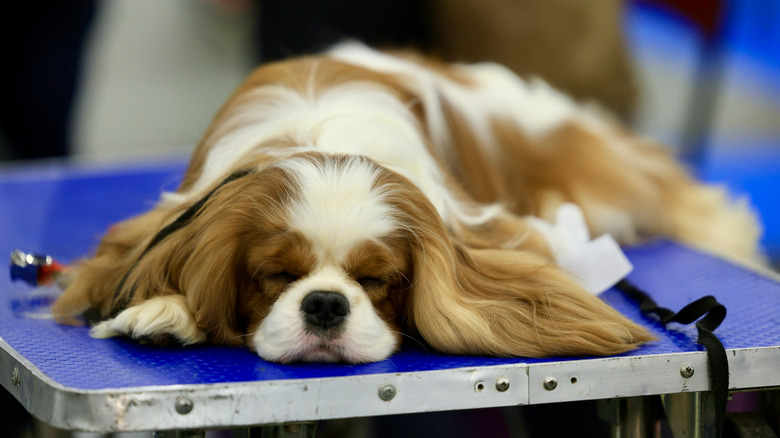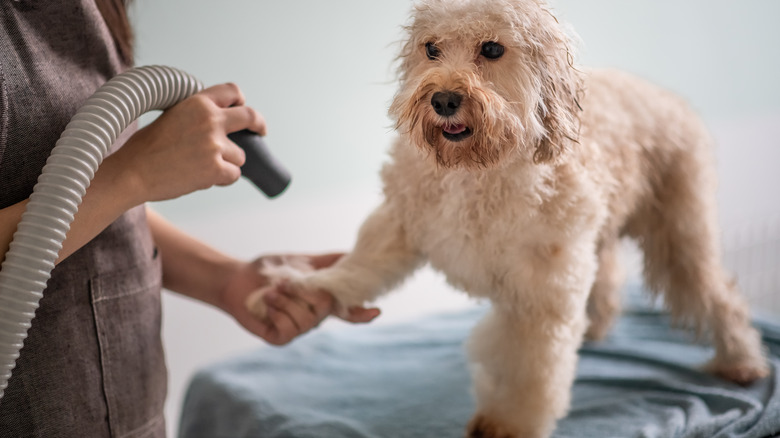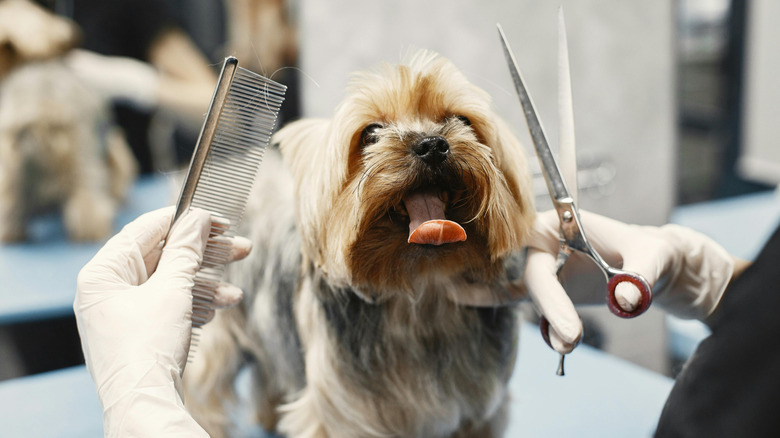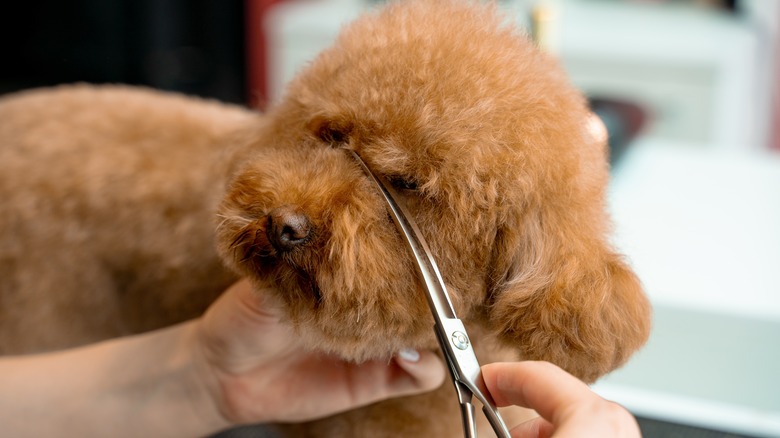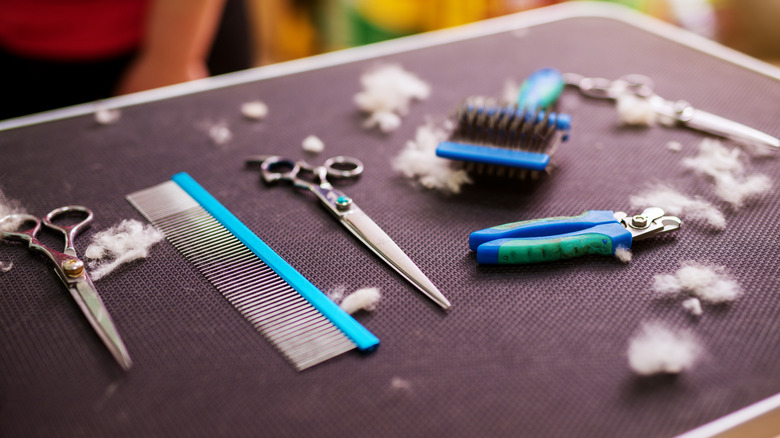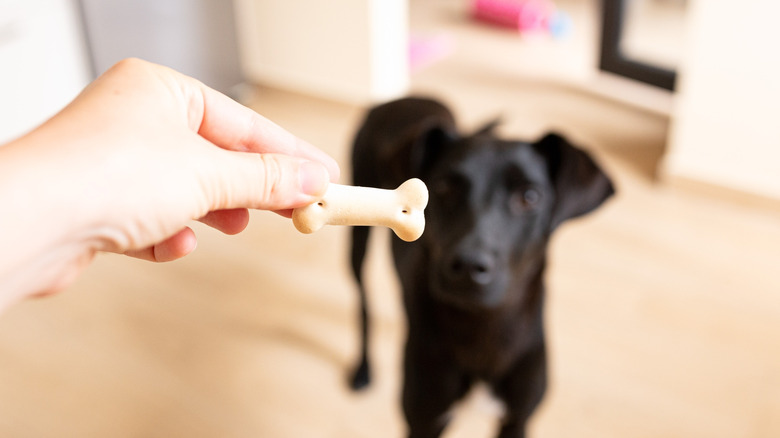Must-Try Tips To Make Cutting Your Dog's Hair Stress-Free
Clippers hum to life, paws shift for balance, and curious eyes follow each movement. Some dogs greet haircut time with eager tail wags, while others glance toward the nearest escape. But that sense of safety can grow when every step feels familiar. Using the same space, introducing tools before the trim, and keeping sessions gentle all contribute to an overall easier treatment of anxious dogs during grooming, helping them stay calm from start to finish. Essentially, when their surroundings match their expectations and each action follows a predictable rhythm, dogs are more likely to relax and cooperate.
The surroundings, the pace, and the sequence of trimming all shape how a dog responds, and soft hands, smooth strokes, and steady voices can help create a calm rhythm that reduces grooming anxiety in dogs. Even small touches, like a textured mat beneath their paws or a few minutes of brushing before clippers, can set the stage for an easier experience. Whether it's just a tidy-up or a full coat cut, our tips can turn grooming from a chore into a trusted routine.
Set up a quiet, non-slip grooming zone
A calm grooming space helps settle your furry friend before the first tool even touches its coat. Quiet rooms help minimize startles from sudden noises, while closed doors soften other household sounds. Moreover, turning off loud phone notifications and lowering any background noise can ensure nothing breaks your dog's focus once the session starts.
With the room generally settled, it's time to create a non-slip zone. A mat or textured towel can help keep your dog's paws steady and secure, while bright, even lighting helps you see the coat clearly for balanced lines and smooth results. Furthermore, keeping clippers with guard combs, a slicker brush, a towel, a bin for trimmed hair, and treats close by means you can move from one step to the next without leaving the space you worked so hard to establish.
Using this same location and layout each time your dog needs to be groomed creates a sense of familiarity, which can build trust with it. Once this steady environment is in place, it becomes easier to apply gentle handling techniques, especially when you know how to get a dog to be still while cutting hair at home. A safe space sets the stage for introducing the tools in a way that keeps your dog comfortable.
Let your dog meet the grooming tools first
To help accustom your dog to your grooming tools, let them become part of your dog's everyday surroundings. Place clippers, brushes, and combs nearby so it can sniff and explore them without pressure. Just make sure a guard is on your clippers so your pup doesn't accidentally nip itself.
Next, help your dog get used to the clipper's noise. Managing sound levels can help establish a more soothing environment during these early introductions. Start with the clippers turned off, giving them time for an unhurried inspection. Once your dog seems relaxed, switch the clippers on at a distance for just a few seconds, and then reward calm behavior with a treat. Gradually bring the sound closer until it feels routine.
When your dog is comfortable with the sights and sounds, add gentle touch. Rest the powered-off clipper against a brush handle before briefly touching its shoulder or side. Keep each session short, and end it while your dog is still relaxed. Repeating these steps in the same place builds familiarity, so by the time you begin trimming, the tools and sensations feel normal, making it easier to work in short, predictable stages.
Trim your dog's fur in short, predictable sessions
Breaking grooming into smaller stages keeps it manageable for both you and your dog. Work on one section, such as a side, and then pause before moving on. Keeping the same order, such as trimming the sides first, then the chest, and finally the legs, forms a steady pattern the dog can recognize.
Short breaks let your pet reset without losing focus. Stepping off the mat, stretching, or enjoying a small treat between stages can keep its energy balanced and prevents frustration. Over time, the sound of clippers starting again becomes a cue for another quick, familiar task instead of a long, tiring session. The trim becomes a set of small, achievable moments instead of one big challenge. Overall, finishing a stage before restlessness starts makes the whole process smoother.
Choose beginner-friendly tools that glide easily through fur
It should go without saying, but the right equipment helps fur trims go smoothly. A slicker brush or comb helps detangle mats and loose fur, letting clippers glide more smoothly and keeping grooming safe and stress-free, especially when dealing with thicker coats. Moreover, pet-grade clippers fitted with guard combs protect the skin and help achieve even results with clipper combs.
Knowing the difference between dog grooming clippers and human clippers for safe at-home cuts helps you choose the best match for your dog's coat. Clippers made for dogs handle a range of textures with quieter motors and less vibration, which helps maintain a calm mood in your pet. When the tools glide easily, grooming feels gentle and controlled, allowing both you and your dog to finish with less stress.
Light, steady strokes in the direction of the hair growth create a clean, even finish, and clearing hair from the blades as you work helps them stay cool and efficient. Afterward, store all of your tools in one container to make setup quicker next time — this way, your dog spends less time waiting for the session to start.
Finish your dog's grooming with a tidy-up, a reward, and a reset
The final minutes of grooming can shape how your dog feels about the next session, so it's important to get it right. A gentle brush at the end will lift any loose hair still clinging to your dog's body, while sweeping and lint-rolling will leave the surrounding area clean. Of course, wiping the clippers and storing your attachments will ensure that they're ready to go next time.
Then, end with something your dog truly enjoys —a favorite treat, a short walk, or a playful game — to make the conclusion feel rewarding. If a bath follows, keep it brief to preserve your dog's relaxed mood. Just make sure to follow our tips to make bathing your dog so much easier.
Ultimately, finishing the same way each time with a clean space, stored tools, and a happy moment builds positive anticipation for the next trim. Over time, cooperation from the dog should become second nature, and grooming should turn into just another familiar part of its care. Now, check out our tips to make trimming your dog's nails easier — because cutting your dog's fur is only one step in the grooming process.
